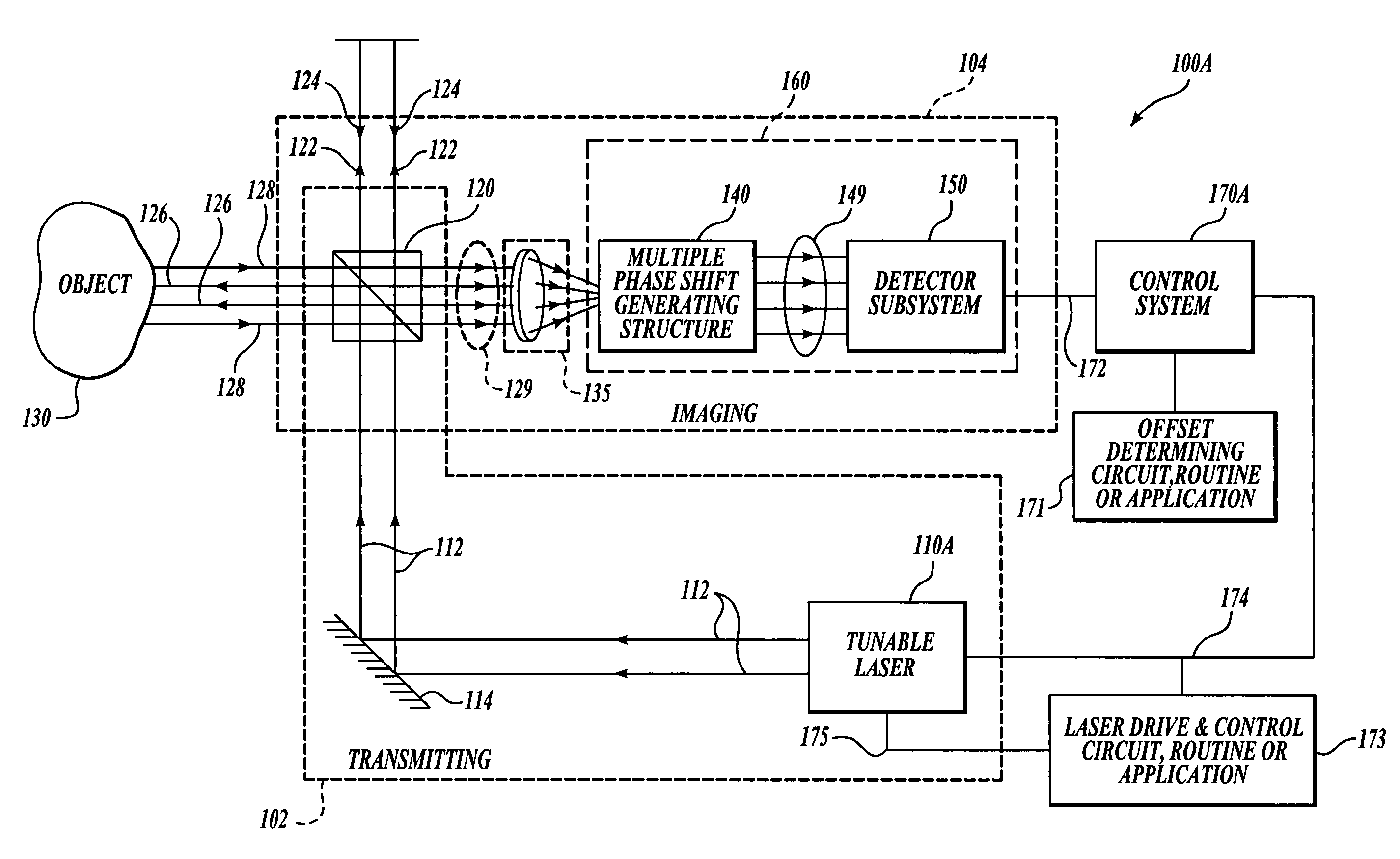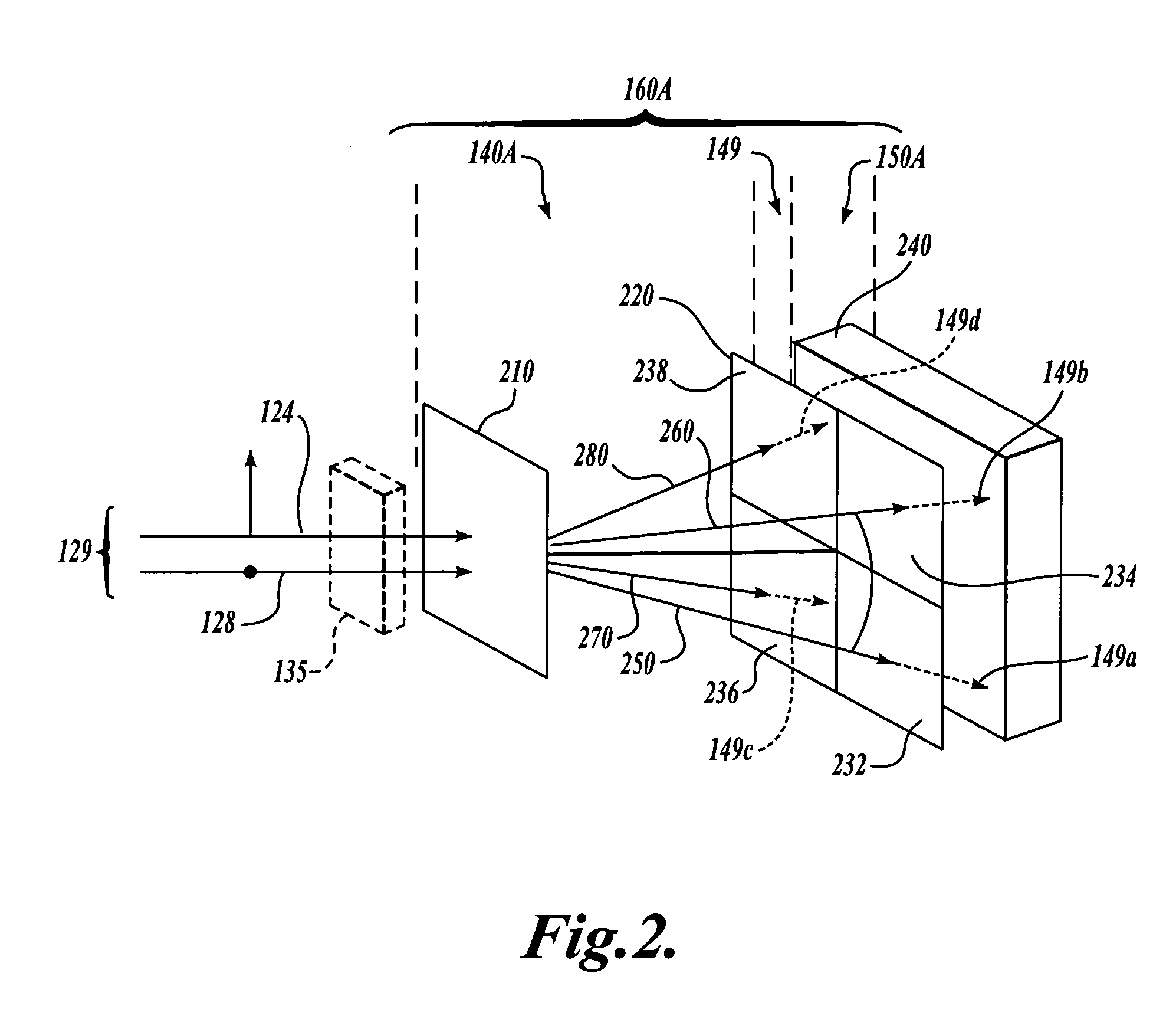Method and apparatus for self-calibration of a tunable-source phase shifting interferometer
a self-calibration and interferometer technology, applied in the field of interferometers, can solve the problems of generality of known prior art system residual offset errors of the tunable-source sour
- Summary
- Abstract
- Description
- Claims
- Application Information
AI Technical Summary
Benefits of technology
Problems solved by technology
Method used
Image
Examples
Embodiment Construction
[0036]FIG. 1 shows a first generic embodiment of an interferometer system 100, which is usable with various exemplary embodiments of the present invention. As shown in FIG. 1, the interferometer system 100 generally includes a transmitting portion 102 and an imaging portion 104. The transmitting portion 102 includes a laser source 110 that transmits a coherent light wavefront 112. As will be described in more detail below, in various exemplary embodiments according to the present invention the laser source 110 is tunable or otherwise able to provide a varying radiation frequency and illumination wavelength. In various exemplary embodiments, the laser source 110 may include wavelength modulation, or any other now known or later-developed device, structure or apparatus that can provide a varying wavelength of light over time, for the coherent light wavefront 112. As used herein, the term “light” encompasses not only visible light, but also any part of the electromagnetic spectrum that...
PUM
 Login to View More
Login to View More Abstract
Description
Claims
Application Information
 Login to View More
Login to View More - R&D
- Intellectual Property
- Life Sciences
- Materials
- Tech Scout
- Unparalleled Data Quality
- Higher Quality Content
- 60% Fewer Hallucinations
Browse by: Latest US Patents, China's latest patents, Technical Efficacy Thesaurus, Application Domain, Technology Topic, Popular Technical Reports.
© 2025 PatSnap. All rights reserved.Legal|Privacy policy|Modern Slavery Act Transparency Statement|Sitemap|About US| Contact US: help@patsnap.com



